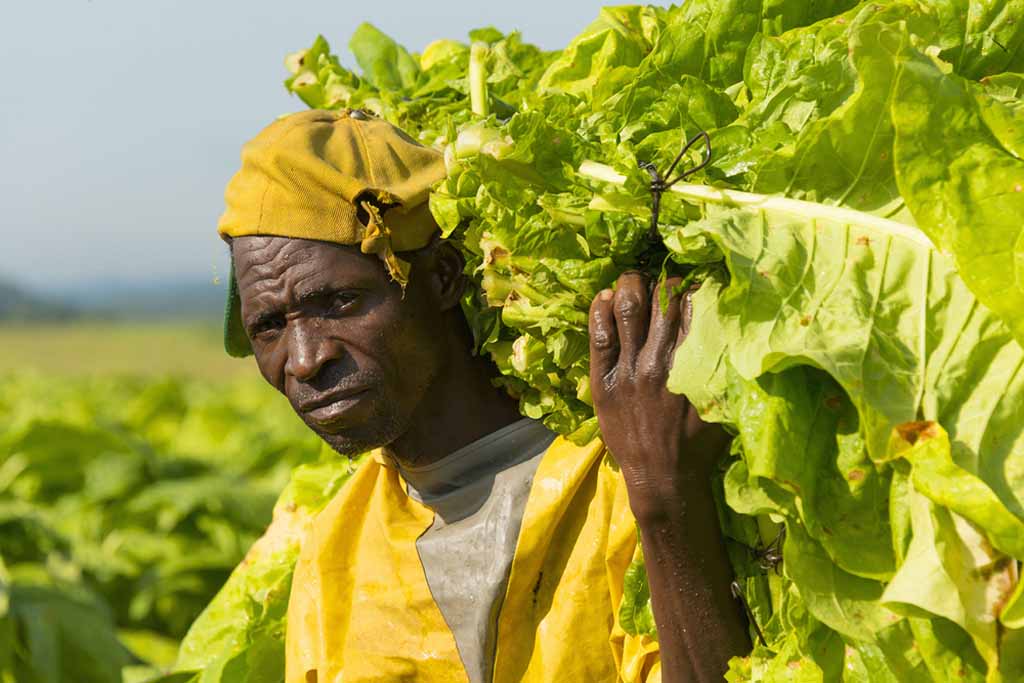Zim targets a US$5 billion tobacco industry
Zimbabwe is progressing well towards its US$5 billion tobacco industry goal, with the majority of targets in the Tobacco Value Chain Transformation Plan (TVCTP) nearly on target.
The TVCTP, adopted by the Government in 2021 aims to transform tobacco industry into a US$5 billion industry by 2025, focusing on increased production, value addition and localisation of funding, while also promoting alternative crops and environmental stewardship.
In a progress update to the Minister of Lands, Agriculture, Fisheries, Water and Rural Development Minister Dr Anxious Masuka, TIMB chairman Mr Patrick Devenish, highlighted local tobacco funding reached 67 percent during the 2024/25 season, nearing the 70 percent target.
The report indicates that local banks provided US$632 million for tobacco production and purchasing.
The figure could be higher, as some banks did not disclose their funding support. Self-funded tobacco by non-contracted growers was about US$30,6 million, the report shows.
By increasing local crop funding, the country retains greater value.
This year, tobacco merchants are expected to spend nearly US$1 billion on tobacco purchases.
Zimbabwe nearly met the 300 million kg set in the tobacco value chain transformation plan in 2023 when the output reached 297 million kg, but drought lowered last year’s output to 231 million kg. This year, the 300 million kg target set in the transformation plan is expected to be reached.
Mr Devenish, appearing before the Parliamentary Portfolio Committee on Lands, Agriculture, Fisheries, Water, and Rural Development, attributed the recent success of tobacco production to contract farming, emphasising its role in easing input access for smallholder farmers.
“The contracting system has been around for a long time, but it’s growing stronger and stronger and that has allowed the development of the smallholder sector,” said Mr Devenish.
“I think the success of the industry is in a huge way due to the success of the smallholder farmer. The smallholder farmer; his yields have gone up significantly. The quality of tobacco he produces has gone up significantly. It has created a whole new beginning of a middle class in rural areas,” he said.
Mr Devenish also said the recent global recognition of Zimbabwe’s tobacco as the world’s best has significantly boosted the industry.
Regarding the diversification of crops to enhance farmers’ incomes, aiming for a 25 percent contribution by 2025, the report indicates that 16,5 percent of the target has already been achieved.
The progress is largely attributed to the provision of essential planting materials. Through collaboration with TIMB, merchants distributed 291 tonnes of maize seed, 2,5 tonnes of sorghum, 67 kg of tomato seed, 67 kg of onion seed and 67 kg of carrot seed to farmers during the current farming season.
To further support farmers, the TIMB conducted training on agronomic practices and capacity building for 63 farmers in 2024. The target for 2025 is to train 500 farmers. Additionally, the TIMB conducted a pilot study on seedless watermelon production in Mutorashanga.
Regarding value addition, aiming to increase tobacco beneficiation, including cut rag and cigarette production, from 2 percent of total tobacco produced to 30 percent by 2025, and boost cigarette exports, a 10,2 percent target was achieved in 2024. This figure could have been higher.
However, due to operational issues at a leading cigarette producer, the output halved to 4,4 billion sticks.
The report notes that total installed cigarette capacity is 16 billion sticks per year, but utilisation is only about 27 percent. Concerning cut rag installed capacity, local potential is 30,4 million kg, but utilisation remains at just 24 percent. The report emphasized the need for incentives for specific local beneficiation value chains and the creation of support industries for cigarette manufacturing materials to reduce imports. It also recommended partnerships in manufacturing for potential markets via toll cigarette manufacturing and Government involvement through lines of credit to support the cigarette manufacturing industry.
Among major investments in value addition is the Cut Rug’s multi-million tobacco processing consisting of PMD or primary processing machines, and an SMD line for cigarette production.
Tobacco value chain starts with the production of cut rag blends and progresses to cigarette manufacturing.
The country’s primary cut rag producers are Cut Rug Processors, Amadol, and British American Tobacco, while major cigarette manufacturers include BAT, Cut Rug Producers, and Pacific.
A nicotine extraction facility in Harare has been completed and is scheduled for commissioning soon.
-ebsinessweekl









